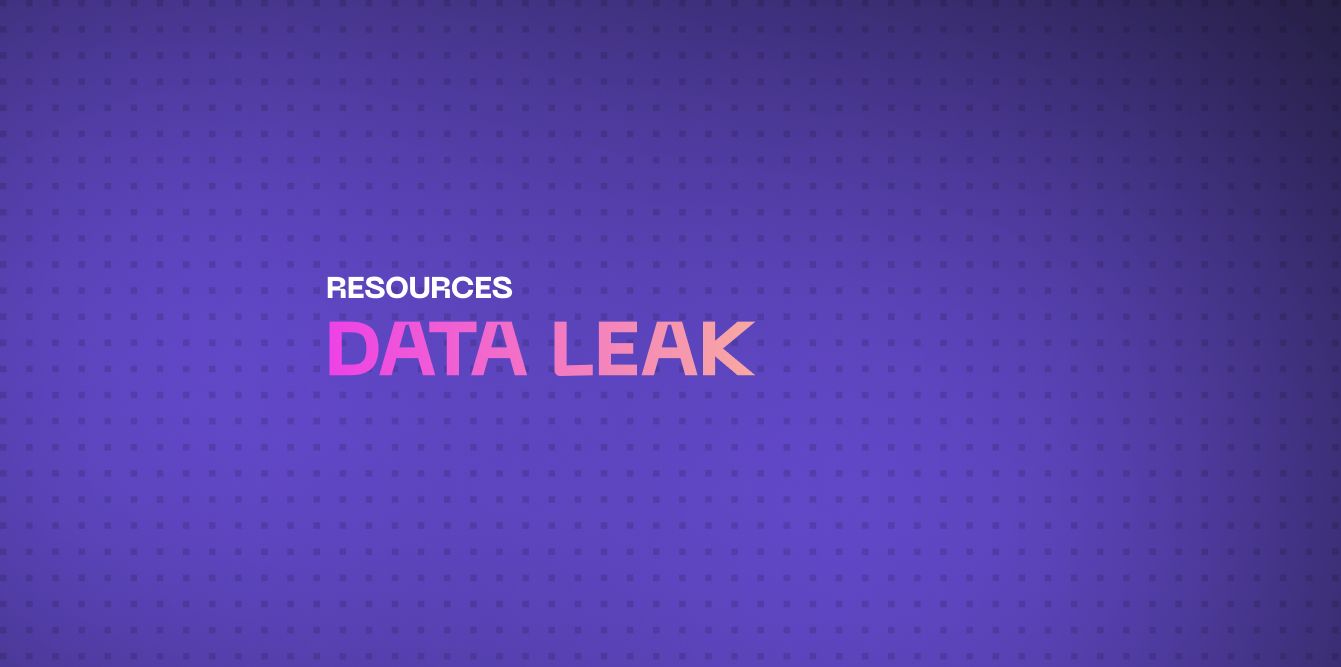What is a Data Leak?
A data leak refers to the unauthorized transmission or exposure of sensitive information from an organization to an external or unintended party. This type of cybersecurity incident can occur when data is unintentionally made accessible, misconfigured, or improperly secured. Once leaked, data can be accessed by cybercriminals, competitors, or other unauthorized individuals, leading to severe consequences for businesses and individuals.
Common Examples of Data Leaks:
- Personal Identifiable Information (PII) exposure
- Financial records being exposed online
- Confidential business documents shared with unintended parties
- Passwords and credentials found in publicly accessible locations
Data leaks are different from data breaches, which involve an intentional attack or exploitation by cybercriminals. Leaks are often due to human error, misconfigurations, or lax security policies, though they can be just as damaging.
How Do Data Leaks Happen?
Data leaks typically occur due to one of the following causes:
1. Misconfigured Security Settings
In many cases, sensitive data becomes exposed due to incorrectly configured cloud storage or servers. Common mistakes include leaving databases unprotected, allowing public access to private files, or failing to apply the correct permissions on cloud services.
2. Weak Access Controls
When organizations fail to set strong authentication and authorization protocols, sensitive data can be exposed. Weak or reused passwords, lack of two-factor authentication (2FA), and improper user privilege management can increase the risk of a data leak.
3. Human Error
Employees may inadvertently send sensitive information to the wrong recipient, use unsecured networks, or share confidential data through unapproved channels, leading to accidental data exposure.
4. Outdated Software and Systems
Outdated software and systems lacking critical security patches are more vulnerable to exploitation. Attackers can take advantage of these vulnerabilities to access or leak data.
5. Third-Party Risk
Many organizations share data with third-party vendors, partners, or service providers. If these external entities don’t follow strong cybersecurity practices, data can be exposed through them.
6. Insecure Mobile Devices
With the increasing use of mobile devices, the risk of data leaks grows. Lost or stolen devices without encryption or security controls can lead to unauthorized access to sensitive data.
Impact of Data Leaks
The repercussions of a data leak can be devastating for both individuals and businesses. Here are some key impacts:
1. Financial Loss
Organizations can suffer significant financial losses due to fines, legal costs, and compensations. Additionally, leaked data can result in the theft of intellectual property or financial information, leading to further economic harm.
2. Reputation Damage
A data leak can severely harm an organization’s reputation, leading to a loss of customer trust and brand value. Consumers and clients may move to competitors that offer stronger data protection.
3. Legal Consequences
Organizations may face lawsuits, regulatory fines, and penalties under laws like the GDPR (General Data Protection Regulation) or CCPA (California Consumer Privacy Act) for failing to adequately protect customer data.
4. Operational Disruption
When a data leak occurs, businesses often need to divert resources to contain the leak, investigate the root cause, and restore systems, disrupting normal business operations.
5. Data Exploitation
Leaked data, especially when it includes personal, financial, or health information, can be used in identity theft, fraud, and phishing attacks, putting both the organization and its customers at risk.
How to Prevent Data Leaks
Preventing data leaks requires a proactive approach to security, including the implementation of proper policies, tools, and training. Here are several key measures:
1. Regular Security Audits
Perform frequent security audits to ensure that all systems, software, and data storage solutions have the correct configurations. Conduct penetration testing to identify potential vulnerabilities.
2. Data Encryption
Encrypt sensitive data both at rest (in storage) and in transit (when it’s being transferred). Even if data is leaked, encryption can make it unreadable to unauthorized parties.
3. Strong Access Control Measures
Use strong authentication methods such as multi-factor authentication (MFA) and ensure that users only have access to the data necessary for their role. Implement the principle of least privilege (PoLP) to limit data exposure.
4. Employee Training and Awareness
Human error is a common cause of data leaks. Train employees regularly on data handling practices, phishing attack identification, and the importance of using secure communication channels.
Effective training should consist of theoretical knowledge and practical training, using phishing simulations and phishing test.
5. Secure Configuration Management
Ensure that cloud and server configurations follow best security practices. Continuously monitor configurations and set automated alerts for misconfigurations.
6. Data Loss Prevention (DLP) Tools
Data Loss Prevention tools can help monitor and control the flow of data across an organization. These tools detect potential data leaks and prevent the unauthorized sharing of sensitive information.
7. Update Software Regularly
Keep all software, operating systems, and applications up to date with the latest patches and security fixes. Vulnerabilities in outdated software can lead to leaks or breaches.
8. Third-Party Security Due Diligence
Vet third-party vendors for security practices and ensure they comply with industry standards for data protection. Use contracts that enforce security requirements.
9. Backup and Disaster Recovery
Regularly back up your data and have a disaster recovery plan in place. In the event of a leak, you can restore your systems to a pre-leak state without significant data loss.
Conclusion
Data leaks are a serious cybersecurity risk, with the potential to cause financial damage, reputational harm, and legal repercussions. Understanding how data leaks happen and implementing robust security measures can significantly reduce the risk. By focusing on encryption, secure access controls, employee training, and regular security audits, organizations can better protect their sensitive information from unauthorized exposure.
By staying vigilant and proactive, you can safeguard your data and prevent the costly consequences of a data leak.
